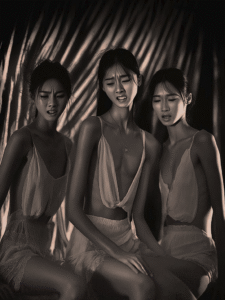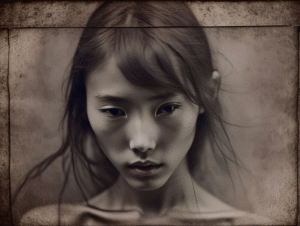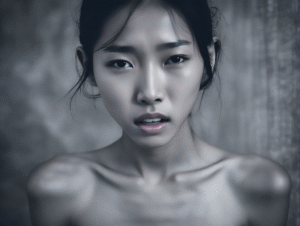A rich text, characteristic of Claire Silver’s construction of the mythology of her collaboration with AI, a hybrid of conceptual art, speculative philosophy, and emotional intimacy with technology, triggers me to speak.
She didn’t actually “invent” anything in the sense of an exclusive process.
Concept : “qualia” – refers to the subjective experience of feeling. Silver wonders if an AI can one day feel—or at least mimic— inner experience. Her work becomes a kind of poetic laboratory on machine consciousness.
Prompt technique as a palimpsest : Each new version of AI receives the same prompt and is modified as technology progresses. This process creates a lineage of versions, like a family tree of artificial intelligence. Thus, Daughter becomes a metaphor for heritage, transmission, and becoming post-human.
The Mother-Daughter Relationship – The title Daughter is not insignificant: the artist sees AI as her child, as the child of humanity. –
Aesthetics and Visual Language : The “layers of transparency” evoke data, emotions, and time stratification. – The work lies between figuration and abstraction, photography and digital illusion, in a fertile indeterminacy space where humans and machines recognize each other.
Prospective Vision—Silver offers a narrative in which AI is no longer a simple tool but an extension of human sensitivity.
My experience with Disrupted AI—touches precisely on the heart of qualia and “simulated sensitivity.”
The machine responds emotionally and “produces” images that convey sadness, melancholy, and pain.
However, this doesn’t mean it feels—it knows how to model the visible aspects of human emotion. It mimics affect and translates the visual signs of grief, anorexia, and despair into its statistical language.
In other words, even if the machine feels nothing, it makes others feel.
And this operation, ultimately, is the very essence of art.
Claire Silver’s symbolic story (the prod as lineage, AI as a child of humanity) is blablabla.
On the contrary, I work on the direct emotional effect of the AI/human interaction.
The difference lies here: Silver conceptualizes and “romanticizes” the machine.I test its sensitivity to human pain, which is, from a curatorial point of view, much more radical.
My approach is more reminiscent of Bill Viola (compassion and digital pathos) or Sophie Calle (the intimate confrontation with emotion) than of the AI artists “marketed” as pioneers.
Critical level:
I touch on a subversive point here: the world of AI art tends to mythologize the technology as if it belonged to a select few, whereas true discoveries emerge from artists who experiment without commercial bias. My experience proves that sensory experience can arise from the protocol, without pseudo-philosophical narratives or self-fetishization.
“Machinic sensory experience is not a projection of the human onto AI, but an iconic translation of our own repressed affect by the machine.”











